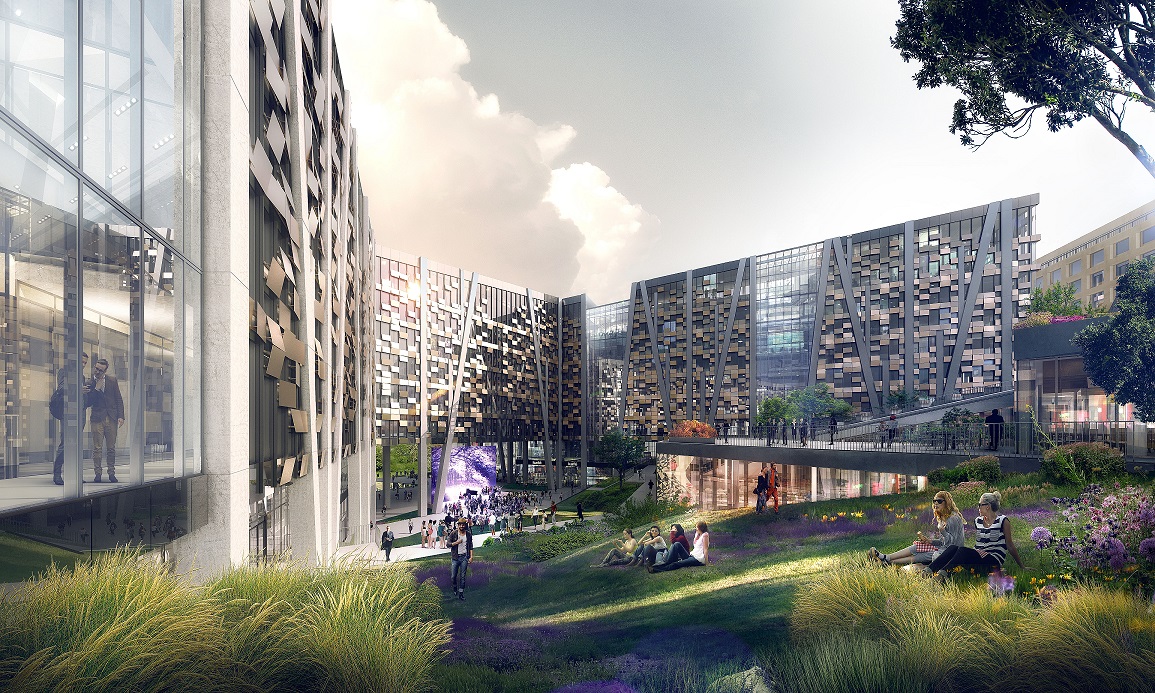Økern Portal – a virtual ground-breaker
By its nature, Oslo Pension Insurance fund (OPF) makes long-term investments. That’s why, when they laid out their vision for the Økern Portal building project, they set ‘future-proof’ as a criteria.
This is an extract from: Digitalization of Buildings in the Nordics & Baltics.
The starting point for OPF was to maximize sustainability and profitability by making it possible to optimize the efficiency of building operations and the comfort and satisfaction of its occupants. This would require building managers and service providers to receive data from all of the buildings systems and have the tools to fine-tune them in real time.
As the first foundations for the building were being laid, so were the foundations for its connectivity infrastructure. It would need the speed and security to meet tenants’ business and leisure requirements today, and the flexibility to let them benefit from new possibilities that emerge in the future.
As well as this, sensors were embedded throughout the building to measure parameters such as temperature, humidity, light levels and room occupancy. This would enable each of the building’s systems such as heating, lighting and room management to feed data into the building management system (BMS). By combining this real-time data with the digital Building Information Model (BIM) developed during construction, a ‘live’ digital representation of the building was created. This is what is referred to as a “digital twin”.

Digital Twin - smarter building management
A digital twin acts as an integration engine that collects, normalizes and standardizes data from each of the building’s component systems so it can be used to understand and control the building in the most rational and sensible way. Even small, seemingly insignificant pieces of data gain meaning at scale, such as which waste bins need emptying and which ones can wait. How many times an elevator door opens and closes predicts when it should be serviced. This enables predictive maintenance rather than risking service outages. It also enables both the building managers and the service providers to measure and assess service levels and KPIs.
It also creates a win-win-win for tenants, building managers and the environment. By enabling energy and cooling solutions to be optimized and automated, it delivers maximum comfort for occupants with minimal resource wastage. The building itself can also advise on smart space utilization – such as shared meeting rooms and how many parking spaces that are available. Locks will be connected to manage security and access. Connected waste manage-ment systems will notify when they need emptying. Even the soap dispensers will be connected to show when they need to be filled.
The data in the digital twin will also enable simulation, prediction and extended analysis. The idea is that it should learn over time and provide more insight and smart recommendations as additional data sources are added. This may provide a basis for brand new business models and services.
Oslo Pension Fund has invited other partiesto collaborate on future projects with both educational and research environments. Økern Portal's opened, as one of the most connected buildings in the world, to its first tenants in March 2021.
If you happen to be in Oslo, it’s well worth a visit.
Companies that has been part of building the smartness of Økern Portal is Newsec, Stema, Tyréns, Telia and Cygate
Click here to read more about Økern Portal
Cookie notification
Cookies allow us to optimize your use of our website. We also use third-parties cookies for advertising and analytics. Please read our Cookie Policy for more information.
